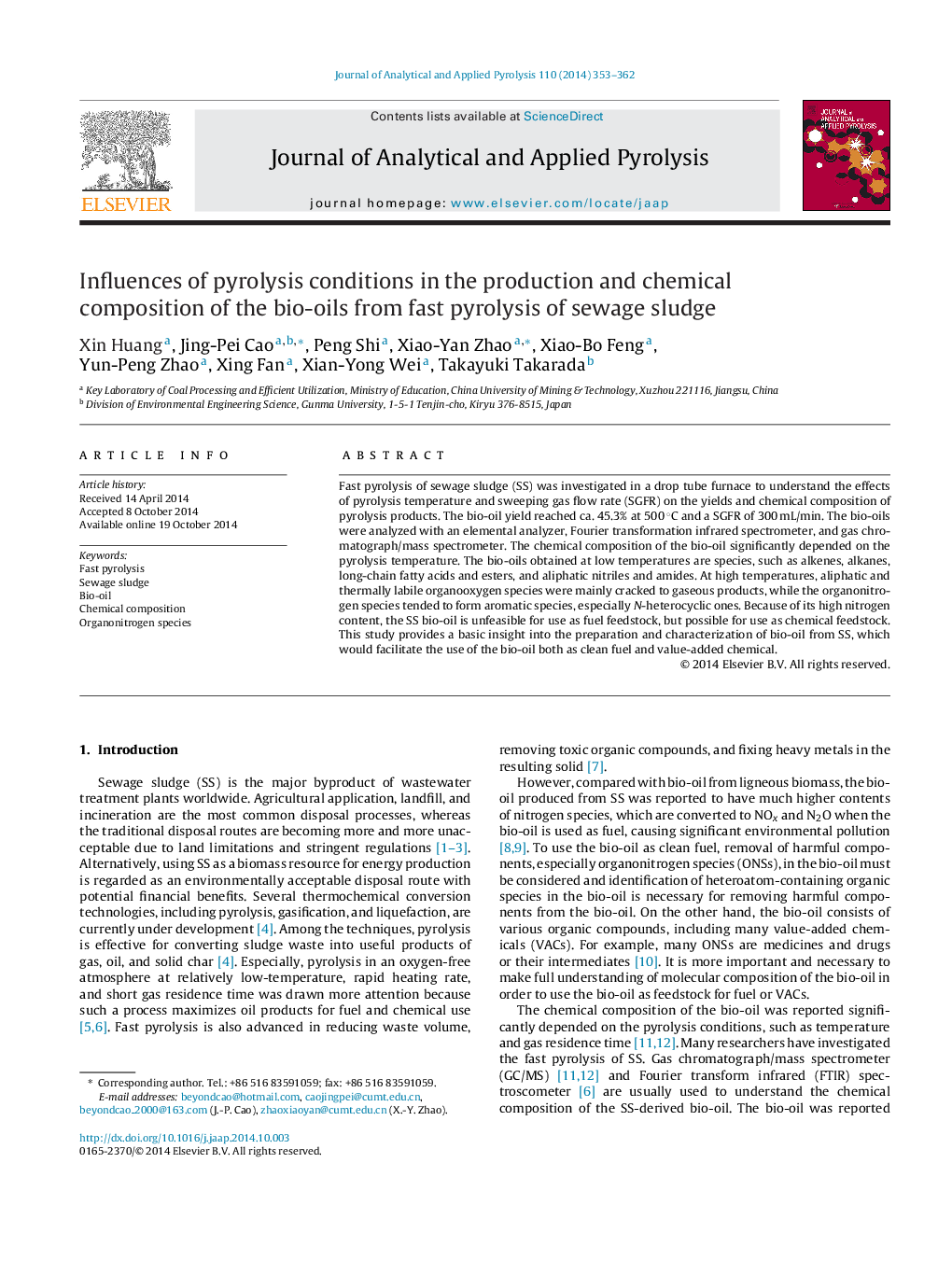| Article ID | Journal | Published Year | Pages | File Type |
|---|---|---|---|---|
| 1197327 | Journal of Analytical and Applied Pyrolysis | 2014 | 10 Pages |
•Pyrolysis at 500 °C and a SGFR of 300 mL/min gave a bio-oil yield of ca. 45.3%.•Chemical composition of bi-oils significantly depended on the pyrolysis temperature.•The bio-oil obtained blew 500 °C is rich in aliphatics and potential for fuel use.•High temperature facilitates forming aromatic organonitrogen species in bio-oil.
Fast pyrolysis of sewage sludge (SS) was investigated in a drop tube furnace to understand the effects of pyrolysis temperature and sweeping gas flow rate (SGFR) on the yields and chemical composition of pyrolysis products. The bio-oil yield reached ca. 45.3% at 500 °C and a SGFR of 300 mL/min. The bio-oils were analyzed with an elemental analyzer, Fourier transformation infrared spectrometer, and gas chromatograph/mass spectrometer. The chemical composition of the bio-oil significantly depended on the pyrolysis temperature. The bio-oils obtained at low temperatures are species, such as alkenes, alkanes, long-chain fatty acids and esters, and aliphatic nitriles and amides. At high temperatures, aliphatic and thermally labile organooxygen species were mainly cracked to gaseous products, while the organonitrogen species tended to form aromatic species, especially N-heterocyclic ones. Because of its high nitrogen content, the SS bio-oil is unfeasible for use as fuel feedstock, but possible for use as chemical feedstock. This study provides a basic insight into the preparation and characterization of bio-oil from SS, which would facilitate the use of the bio-oil both as clean fuel and value-added chemical.
